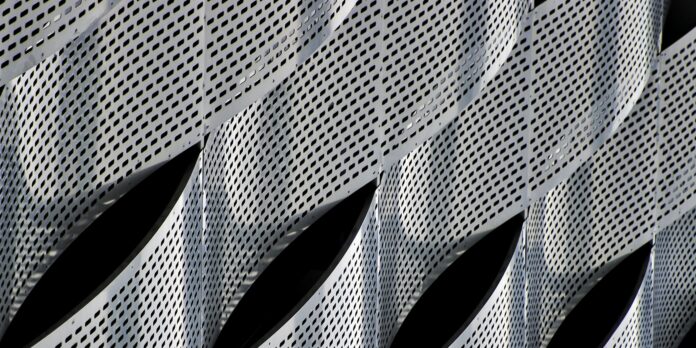The third most frequent element and the most plentiful metal in the world, aluminum makes up 8% of the earth’s crust. The most used metal after steel is aluminum due to its flexibility.
The Manufacture of Aluminum
Bauxite is a mineral from which aluminum is produced. The Bayer Process is used to transform bauxite into aluminum oxide (alumina). The Hall-Heroult Process is then used to transform the alumina into aluminum metal.
Aluminum Annual Demand
Around 29 million tons of aluminum are used annually around the world. 7 million tons of aluminum scrap is recycled and 22 million tones is new aluminum. Recycling aluminum is both economically and ecologically advantageous. In order to generate 1 tons of fresh aluminum, 14,000 kWh are required. In contrast, just 5% of this is required to remold and recycle one tons of aluminum. Alloys made of virgin aluminum and those that have been recycled have the same quality.
The Uses of Aluminum
Pure aluminum has a high electrical conductivity and is soft, ductile, and resistant to corrosion. Although it is often used for foil and conductor cables, additional elements must be alloyed with it to achieve the greater strengths required for other uses. One of the lightest technical metals, aluminum has a strength to weight ratio that is higher than that of steel. Aluminum is used in an expanding variety of applications because to diverse combinations of its beneficial qualities, including strength, lightweight, corrosion resistance, recyclability, and formability. This variety of goods includes anything from tiny packaging foils to structural materials.
Designations of Alloys
Copper, manganese, silicon, zinc, and lithium are the most frequent alloying elements used with aluminum. Iron is always present in trace amounts, and minor additions of lead, zirconium, titanium, chromium, and nickel are also added. 50 of the more than 300 wrought alloys are used often. They are typically recognized using a four-digit method that was developed in the USA and is now widely used. The final two numbers of unalloyed wrought aluminum alloys with the designation 1XXX denote the metal’s purity. When aluminum purity is specified to the closest 0.01 percent, they correspond to the two numbers that come after the decimal point. Changes in impurity limits are indicated by the second digit. When the second number is zero, unalloyed aluminum with naturally occurring impurity limitations is indicated, and when it is one through nine, specific impurities or alloying elements are indicated. The last two numbers of the 2XXX to 8XXX groups designate various aluminum alloys within the group. The second number represents changes to the alloy. The initial alloy is represented by a second digit of zero, while successive alloy changes are represented by the numbers 1 to 9.
Aluminum’s Physical Characteristics
Aluminum Density
One of the lightest commercially accessible metals, aluminum has a density around one third that of steel or copper. Due to its key structural properties, including greater payloads or fuel savings for the transport sectors in particular, it has a high strength to weight ratio.
Aluminum’s Strength
Pure aluminum lacks significant tensile strength. However, alloying components like manganese, silicon, copper, and magnesium may be used to generate an alloy with qualities that are specifically suited for a certain purpose while also enhancing the strength of aluminum. Cold climates are ideally suited to aluminum. It has an advantage over steel in that it maintains toughness at lower temperatures while increasing tensile strength. On the other hand, as the temperature drops, steel becomes brittle.
Aluminum’s Resistance to Corrosion
On the surface of aluminum, an almost immediate coating of aluminum oxide develops when exposed to air. This layer offers exceptional corrosion resistance. Though less resistant to alkalis, it is generally resistant to most acids.
Aluminum’s Thermal Conductivity
Aluminum has a heat conductivity that is around three times that of steel. Due of this, aluminum is a crucial material for heat-exchangers and other cooling and heating applications. Due to this characteristic, together with the fact that metal is non-toxic, aluminum is widely used in cookware and culinary tools.
Aluminum’s Electrical Conductivity
Aluminum has a high enough electrical conductivity to be used as an electrical conductor, along with copper. Although the widely used conducting alloy only has around 62% of the conductivity of annealed copper, it is just one third as heavy and may carry twice as much electricity as copper that is the same weight.
Luminescence of Aluminum
Aluminum is a superb radiant energy reflector, from UV to infrared. It is often used in light fixtures because of its visible light reflectance of around 80%. Aluminum is the perfect insulating material to guard against the sun’s rays in the summer and to prevent heat loss in the winter thanks to the same reflective capabilities.
Aluminum’s Mechanical Properties
Even when badly distorted, aluminum can still function. This makes it possible to roll, extrude, draw, machine, and use other mechanical operations to shape aluminum. High tolerances may be cast into it as well. Aluminum’s characteristics may be modified by alloying, cold working, and heat treatment. The tensile strength of pure aluminum is around 90 MPa, but for certain heat-treatable alloys, it may reach over 690 MPa.
Hardening of Aluminum at Work
Cold working may be used to modify the characteristics of non-heat treatable alloys. One example is cold rolling. These modified attributes depend on how much cold work is done and if any annealing or stabilizing heat treatment is used after working. This information is reviewed and adapted from the sources used by winshare.









